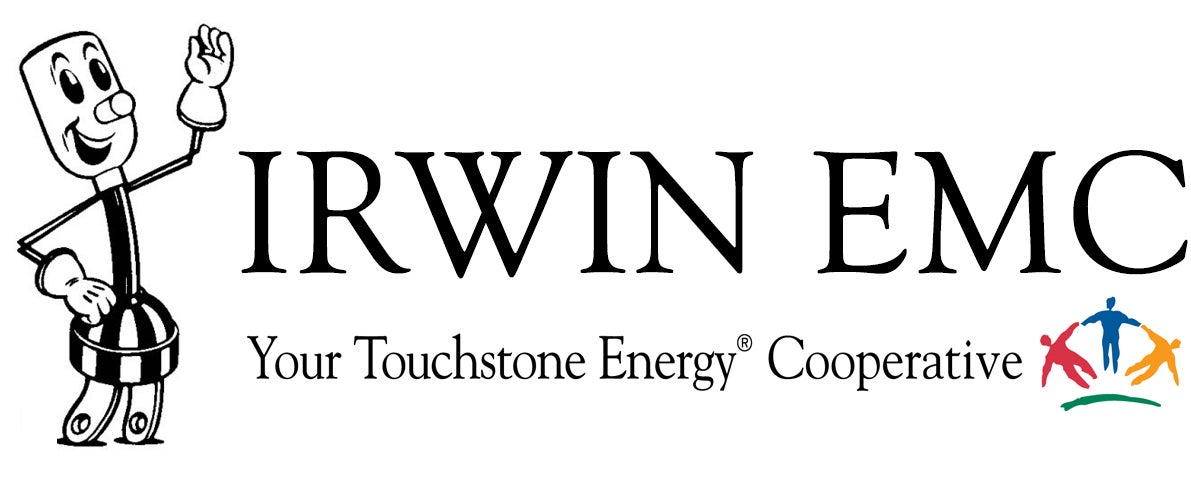-
Meter base (furnished by Irwin EMC) must be located approximately 5 feet above the ground (4 feet minimum -- 6 feet maximum). If a metallic bushing is used to connect the meter base to the switch box, it must be bonded with ground unless holes in the meter base and switch box were cut with a knockout kit.
-
A conduit riser to the weather head must be sized to provide 40% or less fill as per NEC Code and structural strength to support service drop conductors. The bottom of the service conductor drip loop must be at least 12 feet above the ground. The entrance cable must have at least 18 inches of excess wire left past the weather head to allow connection of the service wire.
See below for our GUIDE FOR METER BASE AND WEATHER HEAD INSTALLATION.
See below for our ASSEMBLY GUIDE FOR METERBASE FOR UNDERGROUND SERVICE.
Meter Poles
-
Weather head must be a minimum of 18 inches from top of the pole. The pole must be treated and be at least a Class 7 round or 6”x 6” square and have a minimum of 14.5 feet above the ground. If metallic weather head is used with PVC conduit, it must have a bonding ground.
See below for our ASSEMBLY GUIDE FOR METER POLE INSTALLATION.
Meter base mounted on exterior wall of house or mobile/manufactured home
-
For overhead service, weather head must be a minimum of three feet above the roof.
-
For underground service, the poured footing must be notched out for the conduit.
-
A disconnecting means must be provided for “all” mobile/manufactured home (ex. DCA) or when service is located other than on the exterior wall of the building served 30 feet maximum.
SERVICE PANEL SIZE IN AMPS
REQUIRED MINIMUM SIZE OF ENTRANCE CABLE IN MAST AND METER BASE
COPPER
ALUMINUM
200
2/0
4/0
150
1/0
3/0
100
1
1/0
-
Two 5/8-inch x 8 feet copper or copper clad grounding electrodes must be supplied with a #4 copper or larger grounding conductor spaced a minimum of 6 feet apart. The conductor shall have no splices and be connected directly to the grounding lugs of both the meter base and disconnect box.
-
Underground must be a minimum of 24 inches deep (it is recommended to be in conduit).
-
UL listed ground clamps, non-ferrous.
-
No SE type cable. All entrance must have conduit, mast and weatherhead.
-
An extra disconnect is recommended if meter base and disconnect box are not back to back in a common wall (mandatory in Ben Hill, Irwin, and Turner Counties; Tift and Berrien Counties require if distance of cable between is greater than 8’; Turner County recommends in every case).
-
Temporary Service Pole: If we provide a temporary service pole, there will be a $25.00 monthly rental fee until the temporary service pole is returned. This is in addition to any energy used. Maximum temporary recommended is 100 AMP.
-
Wooden backboard must be large enough to extend 4” minimum beyond all enclosures in every direction.
There are several steps that must take place before a power line can be moved due to the construction of new roads.
-
County representatives should meet with a staking engineer (Allen Green or Dwayne Douglas) to discuss the project.
-
The county is responsible for obtaining signed easements from property owners.
-
Irwin EMC right of way should be cleared an additional 20 feet beyond the marked road stakes. The right of way can be cleared through Irwin EMC on a contract basis or through the county.
-
A contract will be drawn including an estimated price for all work performed. The contract for moving the power line must be signed before beginning construction.
Developers should note the following requirements when planning for power in subdivisions.
-
Roads must be cut in.
-
Survey must be complete and property lines marked with lot numbers.
-
The staking engineer (Allen Green or Dwayne Douglas) will need a platte to design our lines and maps. The platte must indicate a 20 foot easement behind the survey stakes.
-
Prior to construction, each lot should be numbered and a $350 fee per lot must be paid.
